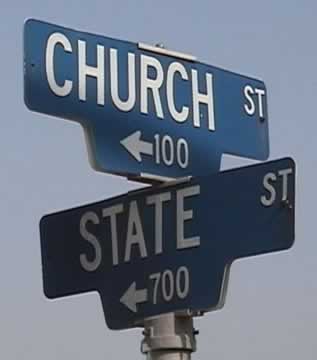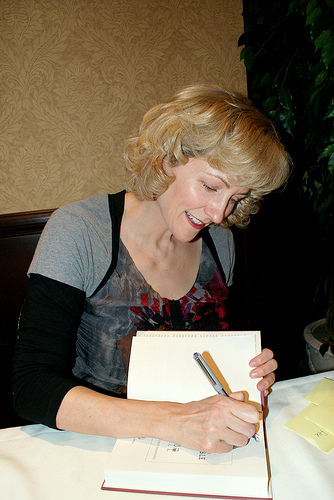
As the world transitions from old to new media at an alarming pace, where a click is far more important than the message, I believe there still needs to be some separation between church and state. Many would disagree.
Print media, newspapers in particular, have struggled with this mightily as revenues have dwindled at an alarming pace. Where once advertising on the front page was strictly forbidden, no longer is that the case. Entire A1s are for sale (just look at the front pages across the country during the election) as is every inch of the printed product, except (for now) the op-ed pages.
Where once “advertorial,” that evil made-up word for the convergence of advertising and editorial, was clearly compartmentalized with a different look, including fonts and design and was edited and dealt with by advertising staff (to tell the consumer that reading that material comes with a caveat: THIS IS ADVERTISING, DRESSED UP AS EDITORIAL), the lines now are clearly blurred.
Church and state have never been such close allies. Declining profits will do that. Church needs state; state needs church. Or the whole village crumbles.
Bryan Goldberg wrote an interesting article here about this very topic. He argues, and this was written nearly two years ago when things weren’t quite as dire as they are today, that “there are a lot of reasons why print is dying. And the separation of ‘church and state’ is amongst the biggest ones. Perhaps it stands atop the list.”
He could be right, of course. Advertising pays for content, it’s that simple. Advertising dictates the terms and those who have the cash call the shots in today’s environment. As Goldberg points out, if your newspaper or magazine wants to take a bunch of models to Egypt for a photo shoot, someone has to pay for it.
If writing bumf and disguising it in editorial integrity sells vacations, cars and homes, that’s where advertisers are going to sink their dollars. The tail is now officially wagging the dog. Things have changed.
Online publications have become masters at deception. It’s incredibly difficult to tell the difference between “paid” content and “real” content.
And nowhere is that more evident than in the leisure/lifestyle arena of food/wine/vacation/fashion (etc.) writing.
I recently clicked on a link tweeted out by 13th Street Winery because it looked intriguing, and I happen to like the wines and people there.
It was actually a retweet from the wine website WineAlign (see below) so I dove in.

Immediately, I was skeptical. The words “A WineAlign Winery Profile” had me worried but the next line, “Written by WineAlign,” was even more troubling. No byline from any of the site’s key writers.
It’s not until the end of the third graph that the website comes clean with this disclaimer: “This feature was sponsored by 13th Street Winery.”
It’s a beautiful piece that paints a lovely portrait of the winery. Winemaker JP Colas is given wide berth to discuss his winemaking style and thoughts on the upcoming vintage.
The whole thing looks and feels like real editorial content written by real journalists and presented just like all the other content on the site; the only difference being the disclaimer. It was later retweeted by at least one WineAlign writer, lending more authenticity to the perceived integrity of the article (see below).

The problem, of course, is this: it’s not real editorial content. It is “sponsored” content paid for by the client, in this case 13th Street, written by I don’t know who. It is fluff; varnished, massaged and vetted by the winery.
The lengthy piece finishes off with a selection of reviews from the winery’s portfolio written by WineAlign critics with yet another disclaimer that reads:
“This feature was sponsored by 13th Street Winery. As a regular feature WineAlign tastes wines submitted by a single winery. Our critics independently, as always, taste, review and rate the wines — good, bad and indifferent, and those reviews are posted to WineAlign. We then independently recommend wines to appear in the winery profile. Wineries pay for this service. Ads for some wines may appear at the same time, but the decision on which wines to put forward in our report, if any, is entirely up to WineAlign.”
That disclaimer was added to the post when I questioned the validity of chosen reviews on my Facebook page. WineAlign staffer, Sarah Goddard, was kind enough to respond:
“Thanks for pointing that out, Rick. Your point about transparency is well taken, and we at WineAlign have updated the post. We forgot to insert a paragraph that we use in our sponsored pieces explaining the absolute independence of our reviews.”

I understand both sides to this story. I can’t blame 13th Street for using WineAlign to generate, albeit PAID FOR, good, positive press (google 13th Street and WineAlign and what pops up to the very top? You guessed it, this story). And I can’t be too hard on WineAlign for trying to generate a new stream of income.
The trouble, for me, because I’m an old school journalist, is the deception, the blurred line between church and state. I don’t think it’s clear enough that the profile is what it is: advertising, a point of view that was paid for to be positive, to be on message and therefore not real journalism.
Here’s a sampling of comments from the FB discussion:
Allie Hughes (marketing): “Weird. I think that the body content is sponsored and they probably had the ethics question from writers so they didn’t list the author, and it looks like they quoted reviews from their contributors and didn’t attribute any of it to them. Strange anonymous publishing BUT a nice article!
Christina Brooks (winery owner): “Can’t speak about this particular article but unfortunately a LOT of what we have been offered the last few years is “advertorials”. We pay, we get a splash article with rave reviews. Sad really, especially magazine content … food for thought.”
Krista Lamb-Davidson (blogger): “Sponsored posts are super common these days. I actually took a class about this last night. It’s basically advertorial, so the winery would have paid for the article to be written and placed. In most cases the publication still has editorial control (not always). This is a huge part of the business model for media and blogs these days — like the special sections in newspapers, which is all sponsored content. The biggest thing is disclosure — here it is made very clear, but in some publications and blogs there isn’t that transparency. I find that concerning. Full disclosure, while I’ve never taken a fee to write a story on my blog, I have had things paid for and received samples.”
Bill Wittur (wine agent): “Thanks for bringing up this story. It may sound cynical, but I’d suggest this has been the way of advertising for the last 100 years or so. Think of TV shows sponsored by car or tobacco companies in the 1960s. It’s really no surprise that wine — a very valuable fermented grape juice at the end of the day — draws so much ‘conflict’ when it comes to makers, reviewers, retailers and consumers. Ultimately, I think it’s important to offer full disclosure, as Krista Lamb-Davidson mentions and as a consumer, trust your friends, try to get to know as much as you can about the producer and worry less about the medium they’re using to promote themselves.”
At the end of the day, it all comes down to integrity. WineAlign has a stable of respected critics, who, I assume, work at arm’s length from this “sponsored” content, at least the profile part of the content. I am not sure how they feel about their reviews appearing with the advertorial, but, hey, critic reviews appear all over the place whether we want them to or not.
Blurring the lines between real editorial and fluff is a concern for me. In a worst-case scenario, remember when Natalie MacLean was paid by Wines of B.C. to promote a release of B.C. wines into the Ontario market?
 MacLean used her website and her “correspondents” to saturate social media with glowing reviews of the wines (see my story on the controversy here.
MacLean used her website and her “correspondents” to saturate social media with glowing reviews of the wines (see my story on the controversy here.
The worst part? MacLean reviewed the wines herself on the “serious” side of her website and, hard to believe (sarcasm alert), but each wine scored 90 points and higher. That is a conflict, it’s wrong, and it should not be condoned or supported, in my opinion, whether those wines really did score high points or not.
Can you ever trust another review of a B.C. wine on her website written by her? I sure can’t.
What bothers me most about this situation with the 13th Street story and reviews is most people don’t have a clue what the tiny “sponsored content” disclosure even means. Will the winery be viewed favourably by the publication in future stories and reviews? I know the writers at WineAlign and, of course, that wouldn’t happen. But the perception is there when you mix editorial content with advertising content.
And, sometimes, perception is everything.






It appears that a subtle antecedent to this is that the smaller winery is squeezed out. We own a small winery in Newfane NY and are caught in this. We need the press but can’t afford it. So where are the independent bloggers in all this? Shouldn’t they be as outraged?
Jim, that statement alone “We need the press but can’t afford it” says a lot. That’s not a good situation when you “can’t afford” press. Sad, in fact. The two should not be linked.